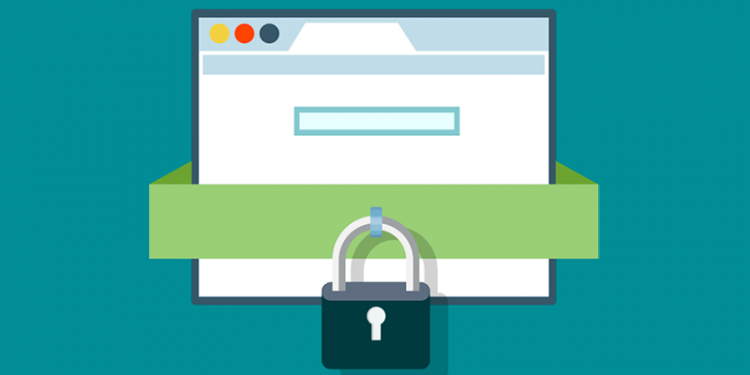If you opened a phishing email— odds are you’re still safe from cybercriminals. The real danger is clicking on a link within the phishing email.
It may seem like an innocent mistake, but it can have devastating consequences on your digital security if you’re not careful. With so many “phishy” scams online, it’s important to understand what could happen if you’re tricked into opening a malicious link or attachment in your inbox.
Let’s review what to watch out for and how to prevent yourself from the dangers of phishing emails:
What is a Phishing Email?
A phishing email is an unsolicited message that appears to be from a legitimate source like your bank or another service provider but is actually a scam.
These emails usually contain links to websites or attachments designed to collect your personal information. Phishing emails typically aim to steal money or access sensitive information such as usernames and passwords, credit card numbers, etc.
How to Spot a Phishing Email
The biggest clue is usually the sender’s address. Often, these will appear suspiciously close but not quite right (like Numbers@gmail may be Numbers1@gmail), which should set off alarm bells immediately.
Additionally, if there are typos in the body of the message or strange requests for personal information like a bank account or Social Security number—this should also raise suspicion. Legitimate companies won’t typically ask for such sensitive information via email alone.
Cybercriminals may be able to use the stolen data from phishing attacks to gain access to banking accounts, medical records, or even online accounts. So, it’s vital that you take your cybersecurity seriously.
Prevent Phishing
To stay safe, try to avoid clicking on unfamiliar links or responding to suspicious emails, even if they seem legitimate. Instead, go directly to the company’s website by typing in the web address yourself or using your previously saved bookmark.
There are also tools like spam filters that can block most phishing emails from entering your inbox. Finally, remember to stay up to date with security and use strong passwords for all your accounts. Taking these steps will help you to remain secure and not fall victim to the malicious intent of phishing emails.
Delete Any Automatic Downloads
Do not open any files that you obtained from a phishing email; they may include malware that may steal your personal information or lock you out of your data. If you downloaded any attachments, do not open them.
Are you unsure if a malicious URL or email could have infected your device with a virus?
Watch careful for some glitches in the system:
Discrepancies in performance
unfamiliar add-ons or programmes that are installed in your browser.
Constant pop-up windows
Any conduct that is out of the norm for the system
In the event that your device exhibits any of these signs, it is strongly recommended that you immediately unplug from the internet and remain offline.
Before contacting a professional for assistance, you should put your Mac into safe mode and carry out the following steps:
Avoid signing in to any of your accounts at any costs.
Remove any temporary files that may be found in your Cache folder.
Examine the activity monitor to see if there are any potentially harmful applications operating in the background.
In addition to the antivirus software that is currently installed on your device, you should run a malware scanner.
After deleting any questionable extensions, you should clear the cache in your browser.
Finally, get in touch with Apple Support to delete and reinstall your operating system.
Report Identity Theft If You Replied To the Email
A common tactic used in phishing attacks is to include a link in the email that prompts the recipient to input sensitive information such as a credit card number. If you are unable to verify that the URL you were given came from a reliable source, you should refrain from providing any information at all.
If you clicked on a dubious link and then entered your credit card information, you should call your credit card issuer immediately so that they may put a freeze on your account. In addition, take these procedures to properly report identity theft to the Federal Trade Commission (FTC), local law enforcement, and all of the major credit bureaus.
Other Types of Phishing
Vishing: Vishing uses voice calls instead of emails to trick victims into giving up their personal information. Visitors will typically pose as representatives from a legitimate company or organization and try to obtain sensitive information such as credit card numbers or login credentials by pretending to offer customer support or conducting a survey.
Smishing: Smishing uses text messages to trick victims into giving up their personal information. Like vishers, smishers will pose as representatives from a legitimate company or organization and try to obtain your sensitive information.
Spear Phishing: Spear phishing is a targeted phishing attack. Unlike deceptive phishing, which uses generic emails that are sent to large groups of people, spear phishing emails are personalized and often contain the recipient’s personal information. For example, a spear phishing email might contain the recipient’s name, address, or other personal information.
Whaling: Whaling is a spear phishing attack explicitly targeting high-profile individuals, like CEOs or other executives. These attacks are more sophisticated than others, as they require the attacker to understand the target’s organization and position well.
It’s easy to panic when you realize you’ve opened a phishing email. However, staying calm and acting quickly is essential to minimize any potential damage caused by a phishing attack.
Follow Techdee for more!





